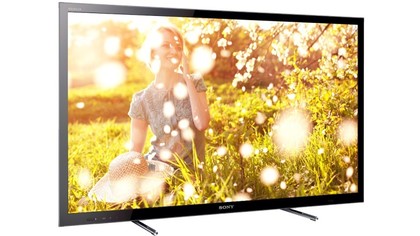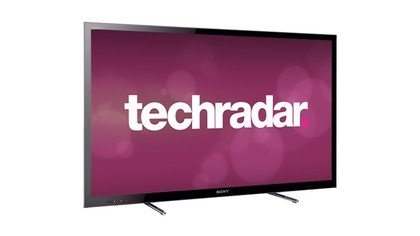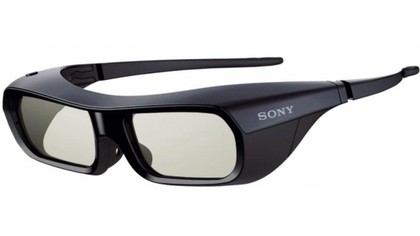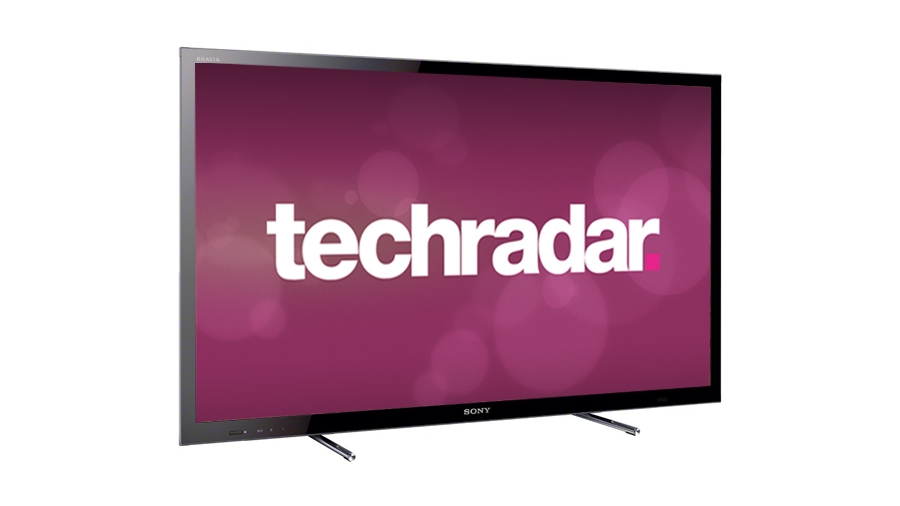Why you can trust TechRadar
With the KDL-40HX753 designed to cope with a plethora of online content, we put it to work with a couple of YouTube videos and a replay of the European Grand Prix from Valencia from the BBC iPlayer.
Pictures are soft, of course, but arguably not quite soft enough since they're also stained with visible digital blocking and picture noise.
To blame is probably the absence of X-Reality PRO; the basic X-Reality processing just isn't as powerful, something that also results in standard definition channels from its Freeview HD tuner lacking a little togetherness.

Compare that to the precise, smooth and ultra-clean live broadcast of Djokovic Vs Stepanek at Wimbledon on BBC One HD.
The other major difference to the step-up HX853 Series is the KDL-40HX753's lack of local dimming, though this doesn't appear to be as crucial as it sounds.
Perhaps it's the relatively small screen, but the KDL-40HX753 displays enough in the way of deep black levels to convince.
In our test of Blu-ray disc District 9, using the Cinema preset as our base, there's noticeable picture noise during a murky scene inside one of the alien's huts, while an outdoor sequence at night demonstrates a greying over of the whole image.
In such scenes it's also possible to see the strongest light from the LEDs on the edges of the screen, though it's so rare it's minor problem.
Overall we'd judge the KDL-40HX753 to have enough contrast for using in a blackout if you're careful, but it's a notch or two below reference level when it comes to the believability of dark areas of images.
That lack of accuracy doesn't apply in other parts of the spectrum; there are few TVs capable of producing natural colours than a good Sony, and the KDL-40HX753 continues that trend.
HD pictures look clean and reasonably detailed, but at the same time they're not the sharpest, crispest HD pictures we've seen; we're talking cinematic, highly watchable pictures, not blow-yer-socks-off visuals.
Motion blur can be cured by judicious use of MotionFlow.
We settled on the Clear Plus setting for watching Blu-ray after finding the Smooth setting creates artefacts around moving objects, and the Clear setting is too bright, though the latter is best in normal ambient light.
Meanwhile, Impulse adds a powerful flicker to video while massively reducing brightness – very weird, and best swerved.
3D
Since there are no 3D specs included in the KDL-40HX753's box, we shouldn't really consider 3D a 'proper' feature on this telly, but our nosy side took over and we asked Sony to send over a pair of 3D specs.
The rechargeable TDG-BR250/B are reasonably comfortable and don't let in much reflected light from behind.
The usual problem with active shutter TVs – namely ghosting and double images, known as crosstalk – isn't an issue here if you use the lowest 3D depth setting, which happily doesn't lessen the effect.
There is a slight lack of contrast, though we were happy with both detail and brightness while using the Cinema 2 setting (the other choice, Cinema 1, flickered too much for our eyes).
As a default MotionFlow is set to its 'standard' power, and though the tech is absolutely vital to keep switched-on during 3D playback, the stronger 'smooth' setting better removes some otherwise nasty judder during pans.

During a sequence from the IMAX classic Grand Canyon Adventure, MotionFlow makes simple sequences of people walking past canyon walls far less taxing on the eyes, and allows reasonably detailed, clear camera pans across Lake Powell.
A shot of a rainbow through mist is equally impressive and very 3D, while fast moving kayakers, and even a 3d show-off sequence of water splashing against the camera lens was easy for our eyes to decipher.

You can buy Sony 3D glasses here (a pair of the TDG-BR250/B costs £59).
Jamie is a freelance tech, travel and space journalist based in the UK. He’s been writing regularly for Techradar since it was launched in 2008 and also writes regularly for Forbes, The Telegraph, the South China Morning Post, Sky & Telescope and the Sky At Night magazine as well as other Future titles T3, Digital Camera World, All About Space and Space.com. He also edits two of his own websites, TravGear.com and WhenIsTheNextEclipse.com that reflect his obsession with travel gear and solar eclipse travel. He is the author of A Stargazing Program For Beginners (Springer, 2015),

